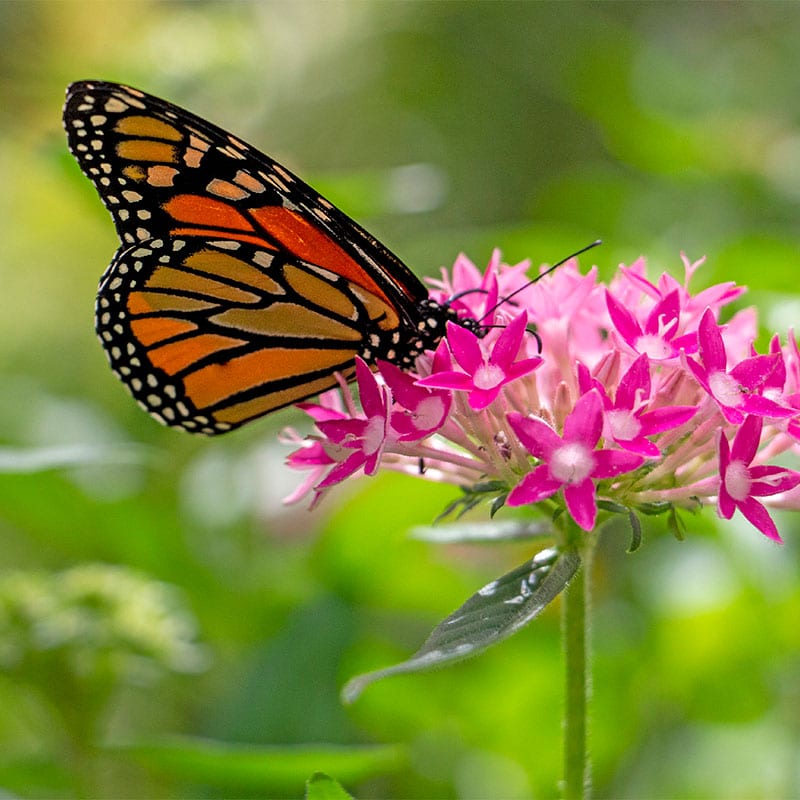Welcome to Facts Vibes! Today we’re fluttering into the fascinating world of monarch butterflies. These magnificent creatures are full of surprises, from their incredible migration patterns to their stunning color transformations. Get ready to be amazed by these fun facts about monarch butterflies.
The Fascinating World of Monarch Butterflies
The Fascinating World of Monarch Butterflies
Monarch butterflies are truly remarkable creatures that captivate the imagination of people around the world. Their striking orange and black wings are a sight to behold, and their annual migration from Canada to Mexico is one of the most incredible natural phenomena on the planet.
These amazing insects are also known for their unique life cycle. From the tiny eggs laid on milkweed plants to the graceful metamorphosis into a chrysalis and finally emerging as a beautiful butterfly, Monarchs undergo a truly miraculous transformation.
The plight of the Monarch butterfly is an important issue in today’s world. Habitat loss, climate change, and pesticide use have all contributed to a decline in their numbers. Conservation efforts and the planting of milkweed are crucial steps in ensuring the survival of these iconic insects for future generations to enjoy.
Overall, the world of Monarch butterflies is a fascinating one, filled with wonder, beauty, and the need for conservation. It’s a world worth exploring and protecting for the benefit of both nature and humanity.
Most popular facts
Monarch butterflies are known for their annual migration, traveling thousands of miles from North America to Mexico.
Monarch butterflies are known for their annual migration, traveling thousands of miles from North America to Mexico.
The caterpillars of monarch butterflies feed exclusively on milkweed plants, which contain toxins that make the adult butterflies toxic to predators.
Monarch butterfly caterpillars feed exclusively on milkweed plants and the toxins in the plant make the adult butterflies toxic to predators.
Monarch butterflies undergo four stages of metamorphosis: egg, larva, pupa, and adult butterfly.
Monarch butterflies undergo four stages of metamorphosis: egg, larva, pupa, and adult butterfly.
Adult monarch butterflies can live up to 2-6 weeks during the summer breeding season, but those that migrate can live several months.
Adult monarch butterflies can live up to 2-6 weeks during the summer breeding season, but those that migrate can live several months.
Monarch butterflies have a wingspan of
Monarch butterflies have a wingspan of approximately 3.5 to 4 inches.
7 to
7 to is a common file format used for storing and transmitting textual information in digital form.
1 inches (
1 inch is equal to 2.54 centimeters.
4 to
4 to in the context of Information and facts refers to the transmission rate, commonly used in data communication to indicate a speed of 4 megabits per second.
4 cm).
4 cm is a unit of measurement commonly used to represent length or distance in the context of Information and facts.
The vibrant orange and black colors of monarch butterflies serve as a warning to predators that they are toxic and unpalatable.
The vibrant orange and black colors of monarch butterflies serve as a warning to predators that they are toxic and unpalatable.
Monarch butterflies use the position of the sun for navigation during their long migratory journey.
Monarch butterflies use the position of the sun for navigation during their long migratory journey.
Monarch butterflies are found in various habitats, including meadows, fields, and gardens, as well as along roadsides and in urban areas.
Monarch butterflies are found in various habitats, including meadows, fields, and gardens, as well as along roadsides and in urban areas.
Female monarch butterflies lay their eggs on milkweed plants, which provide food for the emerging caterpillars.
Female monarch butterflies lay their eggs on milkweed plants, which provide food for the emerging caterpillars.
Monarch butterflies are important pollinators, as they feed on nectar from a wide variety of flowers.
Monarch butterflies are important pollinators as they feed on nectar from a wide variety of flowers.
The population of monarch butterflies has declined significantly due to habitat loss, climate change, and pesticide use.
The population of monarch butterflies has declined significantly due to habitat loss, climate change, and pesticide use.
Monarch butterflies are the state insect of seven U.S. states, including Alabama, Idaho, Illinois, Minnesota, Texas, Vermont, and West Virginia.
Monarch butterflies are the state insect of seven U.S. states, including Alabama, Idaho, Illinois, Minnesota, Texas, Vermont, and West Virginia.
Monarch butterflies weigh less than half a gram.
True.
Monarch butterflies are known for their unique behavior of clustering together in large numbers during migration, forming spectacular gatherings in certain roosting sites.
Monarch butterflies exhibit unique behavior by clustering together in large numbers during migration, creating spectacular gatherings at certain roosting sites.
Monarch butterflies have been studied extensively by scientists to better understand their migratory patterns and conservation needs.
Monarch butterflies have been studied extensively by scientists to better understand their migratory patterns and conservation needs.
In conclusion, the monarch butterfly is truly a remarkable creature. Its unique behaviors and incredible migrations make it a fascinating subject of study and admiration. By learning more about these beautiful insects, we can gain a deeper appreciation for the delicate balance of nature and the importance of conservation efforts to protect their habitats.
